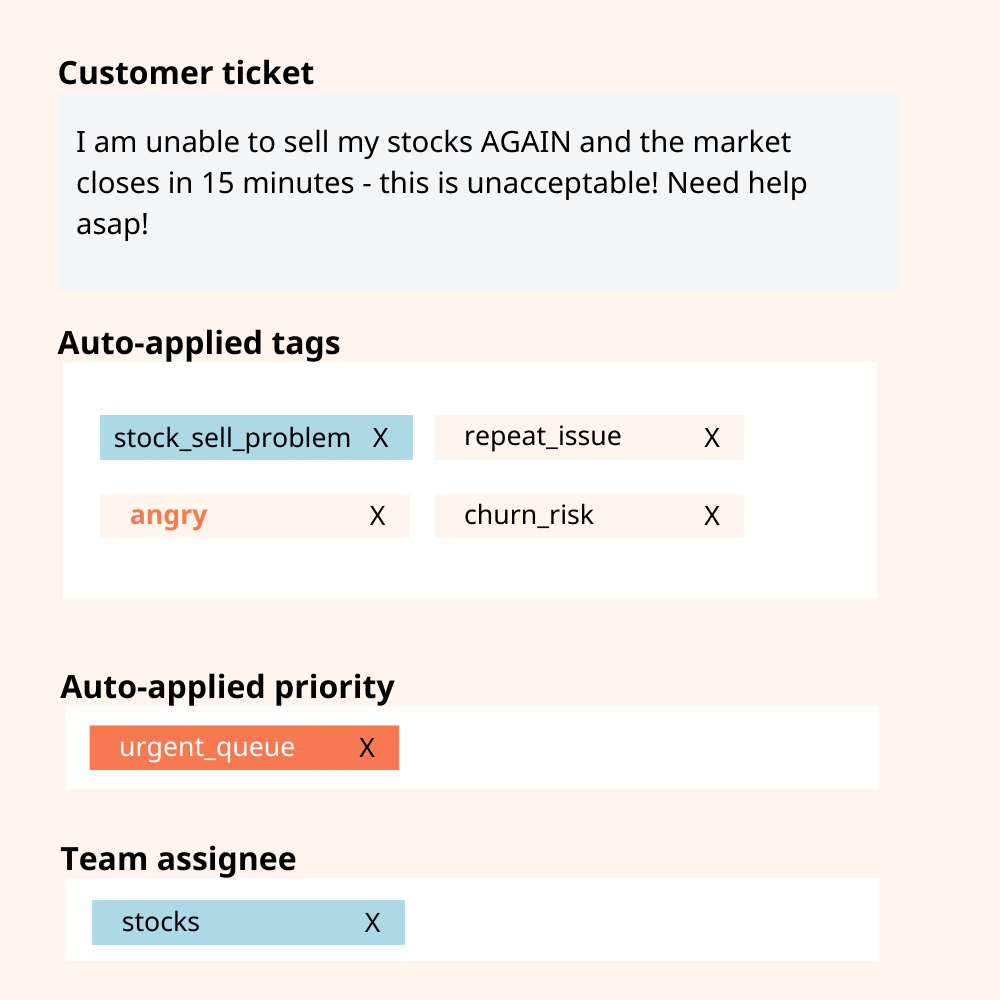Imagine yourself 10 or 20 years ago. You would take half a day off from the office to go to your bank, stand in long queues, and wait for your turn to apply for a home loan.
Basic banking activities like transferring money, raising a complaint about your credit card charges - you did everything offline.
Fast forward to today, you, like most people, haven’t visited banks in ages. You either bank online with legacy brands or have switched to challenger banks. Everything is online, everything is quick, and everything is convenient.
Technology has changed finance, forever!
The finance sector has undergone a major shift over the last couple of decades with the advent of digital transformation.
The last few years have seen even faster changes.
The entry of FinTech applications and tech giants has made financial services much more accessible and convenient for customers and has put massive pressure on the incumbents.
According to an Everfi report, 53% of consumers of financial institutions have changed the primary financial provider they use and an additional 9% said they are considering it.
In such a competitive space, financial businesses today rely heavily on service differentiation and taking full advantage of all accessible data.
Yet, few financial companies are bogged with conventional thinking, outdated operational models, and legacy systems. This is especially true for the customer service department.
And while digital transformation has forever changed how the finance sector operations and logistics are handled, customer service has been left behind in the fun.
Tech-driven customer service as the differentiator?
Customer experience in FinTech as a whole is continuously being redefined. As the finance world continues to shift, FinTech companies have to place a lot of emphasis on understanding what their customers are saying, or implying.
With technology at the heart of their business, FinTech firms are always expected to be in the vanguard of tech adoption. And why not?
Alan Qi, VP and Chief Data Scientist of Ant Financial said that the term FinTech should be replaced by TechFin!
And to make a mark in this competitive space, tech-driven finance companies have to start looking at making themselves more appealing by filling the gaps in customer service.
One way of doing this is sentiment analysis.
For traditional companies as well, who are looking to revamp the way they do customer service, analysing customer sentiments is being hailed as a means to accelerate overall digital transformation.
So what’s the fuss all about?
Let’s find out.
What is customer sentiment analysis?
Customer sentiment analysis is a way of reading customer feedback and conversations and identifying the underlying issues and sentiments.
It shows you how your customers are reacting - positively or negatively, to your company’s products, features, and processes.
When you read a piece of customer feedback - let’s say a fintech app feature review - you can immediately pick up on whether the customer is feeling happy, unhappy, or just blah.
With customer sentiment analysis, you can understand why they’re feeling the way they are, and even predict intentions such as interest in your product, or risk of churn.
Pretty powerful, right?
This leads us to our main question: why should FinTech companies like you care?
Why Is AI-based customer sentiment analysis important in FinTech?
Let’s face it. We all want to utilise data to help our businesses grow. And FinTech companies do not have a shortage of data. Customer service departments in FinTech companies are no exception.
There is a goldmine of customer data lying with the customer service teams. But the challenge is to quickly analyse that data and get actionable insights, at scale.
'At scale' is the keyword here.
Looking at a couple of reviews, or customer chats can never give you reliable insights. The overwhelming customer data stored in your warehouses make it difficult to identify trends and make confident decisions.
It is humanly impossible to scour through all that data. As a result, this useful customer service data is underused, or worse, never used.
This is where AI steps in.
Sentiment analysis can trace its roots to artificial intelligence (AI) and machine learning (ML). It is an application of natural language processing (NLP) which gives computers the ability to understand the text and spoken words in the same way as we do.
With AI-driven customer sentiment analysis, you can tackle large volumes of customer data quickly, understand the implied sentiments, and uncover meaningful insights hidden in all of your chats, reviews, comments, voice calls, and so on.
What can FinTech companies achieve with customer sentiment analysis?
1. Understand (and improve) brand perception
Data from your social media and the internet about your product, service, features, or overall brand can be the truest indicator of how customers are feeling about you and your competitors.
Take a crypto exchange for example. Crypto companies get a lot of negative press almost daily.
A financial guru commenting on the sector's volatility can influence your customers. In such a scenario, building and improving trust within its community is essential to maintain that brand image.
How about turning negative social comments into tickets?
Analysing the sentiments of social comments such as "I don't trust you anymore! Is my money really safe? Bitcoin has crashed. Think I want to withdraw", and turning them into appropriate tickets can help you step up your game when your customers begin to lose trust in your brand.

2. Personalise customer engagement
Keeping a track of customer sentiments will help customer service teams to engage with the customers better and provide personalised experiences.
Pooling in data from social comments, reviews, and chats, for instance, can be used to understand customer behaviour throughout their journey. All these data points can then form a cohesive narrative about how a customer is feeling and inform customer service interactions.
Companies like American Express and Visa, for instance, can integrate sentiment analysis to provide customised offers to their customers when they reach out.
3. Prioritise customer issues
When it comes to money, people are extra sensitive and cautious.
A minute late, and a customer may have to forgo a particular rate, causing them to lose millions of their hard-earned money. Customer support can use sentiment analysis to tag and categorise support tickets based on the topic, urgency, or criticality of issues.
If you’re Robinhood and you get a ticket like - “I am unable to sell my stocks AGAIN and the market closes in 15 minutes - this is unacceptable! Need help asap!”
A comment like this is clearly urgent and the customer is unhappy. By detecting this, such tickets can be prioritised and added to the urgent queue.
As a result, the right customer service team can step in at the right moment, provide the right help and avoid a disaster.

4. Launch (or kill) services
Sentiment analysis can be used to get a holistic understanding of how customers feel and react to their offerings.
Imagine a neo bank like Revolut revamping its credit card rewards system. It's thinking of launching higher cash back rewards on fuel purchases, for example
By analysing customer complaints, comments, reviews, etc. the challenger bank can understand how the current system is being perceived by the customers if there’s any demand for such a change, and capture data on comparison with competitors.
“Can’t recommend this card enough, I use it everywhere! The only thing is - my highest expenses are on fuel. Would love to have bigger rewards there or a fuel-only card. ”
“I did like your app - very easy to use. But I recently switched to one of the ‘real banks’. They have a fuel-only card that gives me 2x reward points on all my gas purchases. Cashbacks vs Convenience - I chose the former.”
And after analysing their customer service data, if they realise they get a lot of reviews like the ones above, they can make a confident call on cashbacks.
5. Improve products features
Customer sentiment analysis can help you understand customer needs and build solutions around them.
If you're a digital wallet and you get several contacts talking about the scanner feature on your app negatively. You'd want to take notice and get the product team to prioritise it.

Final Thoughts
FinTech customers, especially for challenger banks, are expensive to acquire. Whereas, in such a competitive space, dissatisfied customers don't take much time to turn on the companies and look for alternative solutions.
Therefore, it's important for FinTech companies to improve the overall customer experience so that customers stick around.
This can be done through a systematic approach to understanding what their customers are saying.
This is where sentiment analysis can be an excellent value addition to other customer metrics such as Net Promoter Score (NPS) - one of the most important KPI in the financial sector.
With granular emotion detection through customer sentiment analysis, you can get detailed insights into the minds of your customers and ultimately improve customer experience across physical branches, websites, apps, and call centres.
Heading 1
Heading 2
Heading 3
Heading 4
Heading 5
Heading 6
Lorem ipsum dolor sit amet, consectetur adipiscing elit, sed do eiusmod tempor incididunt ut labore et dolore magna aliqua. Ut enim ad minim veniam, quis nostrud exercitation ullamco laboris nisi ut aliquip ex ea commodo consequat. Duis aute irure dolor in reprehenderit in voluptate velit esse cillum dolore eu fugiat nulla pariatur.
Block quote
Ordered list
- Item 1
- Item 2
- Item 3
Unordered list
- Item A
- Item B
- Item C
Bold text
Emphasis
Superscript
Subscript

.webp)
.webp)






.png)

.webp)
.svg)











